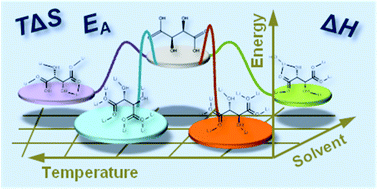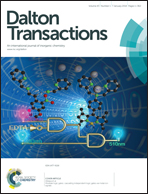Phase selection during the crystallization of metal–organic frameworks; thermodynamic and kinetic factors in the lithium tartrate system†
Abstract
We report the phase behaviour of chiral, racemic and meso-lithium tartrate frameworks, which was examined as a function of solvent system, temperature and ligand isomer. Through our comprehensive investigation of this system of 14 diverse phases, we have gained detailed insight into the effect of synthesis conditions on product structure, and elucidated the thermodynamic and kinetic factors involved in phase selection. Reactions in ethanol between lithium acetate and chiral, racemic and meso-tartaric acids give rise to anhydrous kinetic products; polymorphs with higher entropy tend to appear at high temperatures. Reactions at room temperature in water–ethanol mixtures give rise to hydrated kinetic products, including two new crystal structures, [Li2(D,L-tartrate)(H2O)2]n in P![[1 with combining macron]](https://www.rsc.org/images/entities/char_0031_0304.gif) and [Li2(meso-tartrate)(H2O)0.5]n in C2221, whose structures are contrasted with known anhydrous products. Reactions at elevated temperatures in water–ethanol mixtures result in the formation of low enthalpy, anhydrous products and, furthermore, the global minimum energy structure appears at high temperatures in all cases owing to in situ ligand isomerization.
and [Li2(meso-tartrate)(H2O)0.5]n in C2221, whose structures are contrasted with known anhydrous products. Reactions at elevated temperatures in water–ethanol mixtures result in the formation of low enthalpy, anhydrous products and, furthermore, the global minimum energy structure appears at high temperatures in all cases owing to in situ ligand isomerization.


 Please wait while we load your content...
Please wait while we load your content...